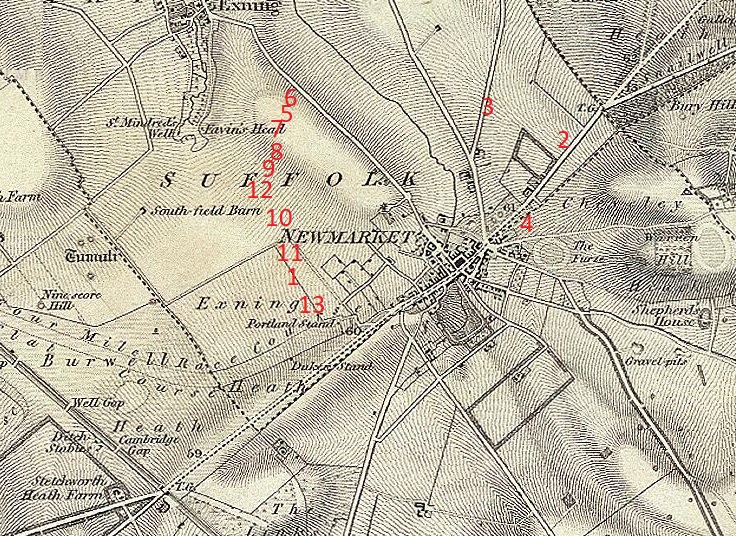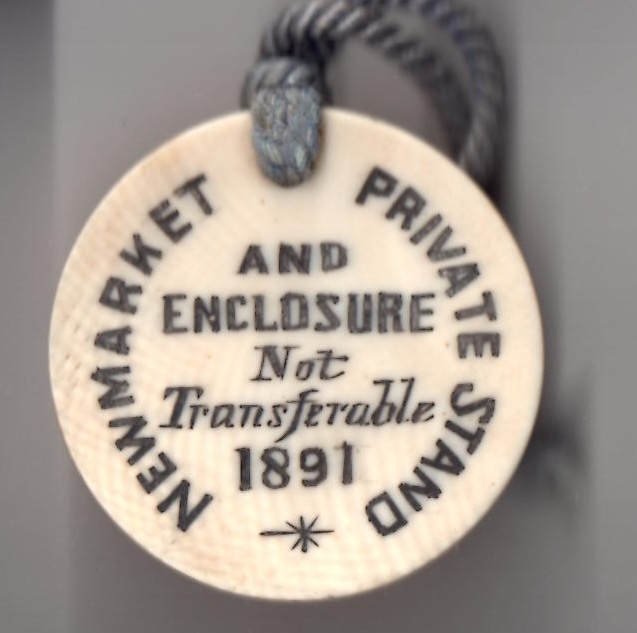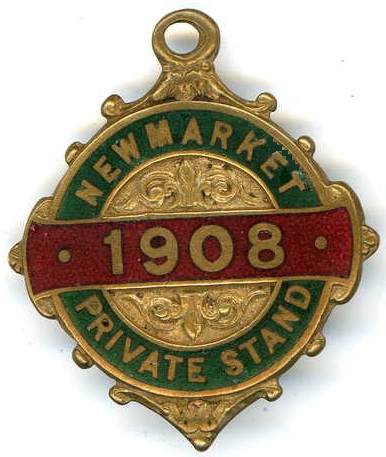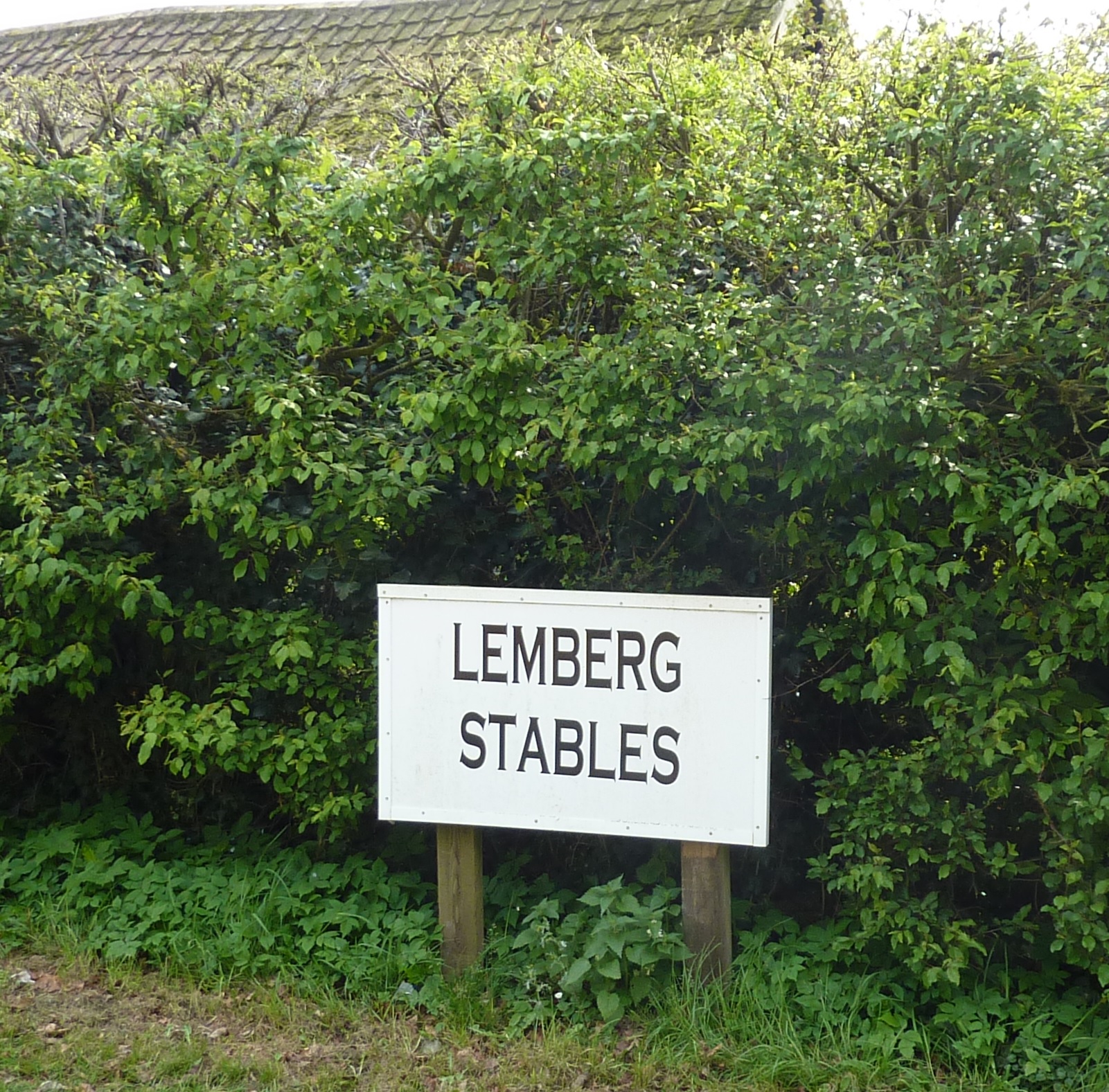Hamilton Road stables
In the mid-1960s a vast area of land, owned by the Jockey Club, close to the Heath, gallops and Rowley Mile course, was earmarked by the Jockey Club to form part of a massive venture aimed at increasing the number of stables in Newmarket, On the Hamilton Road plans were presented for the new stables, and the first to take advantage of the new scheme was former champion jockey turned trainer, Doug Smith. In December 1967, three days before Christmas, Doug announced that he would be moving his string of 30 horses from the yard of his former master, Geoff Brooke, and relocating to a gleaming new yard, the first of several offered to prospective tenants by the Jockey Club. Over half a century on, in 2020 the Hamilton Road contained in excess of 25 such racing establishments, many having changed owners, trainers and stable names on a regular basis since Doug Smith first occupied Cedar Lodge Stables back in early 1968. They offer direct and easy access to all of the Jockey Club Estates facilities and gallops, all within easy reach of the Warren Hill gallops. The Jockey Club cares for 2500 acres of maintained gallops, which includes over 50 miles of turf gallops, and since those early days of 1967 many Classic winners have been sent out from the wide array of Hamilton Road Stables.
1909 Norfolk Stakes LEMBERG 2/1 fav owned by Alfred Cox, trained by Alec Taylor and ridden by Bernard Dillon
1909 Middle Park Stakes LEMBERG 7/4 fav owned by Alfred Cox, trained by Alec Taylor and ridden by Danny Maher
1909 Dewhurst Stakes LEMBERG 4/11 fav owned by Alfred Cox, trained by Alec Taylor and ridden by Danny Maher
1910 Epsom Derby LEMBERG (SR 2076) 7/4 fav owned by Alfred Cox, trained by Alec Taylor and ridden by Bernard Dillon
1910 St James's Palace Stakes LEMBERG 1/8 fav owned by Alfred Cox, trained by Alec Taylor and ridden by Danny Maher
1910 Eclipse Stakes LEMBERG 5/4 fav (dead-heat) owned by Alfred Cox, trained by Alec Taylor and ridden by Bernard Dillon
1910 Jockey Club Stakes LEMBERG 1/3 fav owned by Alfred Cox, trained by Alec Taylor and ridden by Danny Maher
1910 Champion Stakes LEMBERG 12/100 fav owned by Alfred Cox, trained by Alec Taylor and ridden by Danny Maher
1911 Coronation Cup LEMBERG 9/4 jt fav owned by Alfred Cox, trained by Alec Taylor and ridden by Bernard Dillon
1911 Doncaster Cup LEMBERG 4/9 fav owned by Alfred Cox, trained by Alec Taylor and ridden by Frank Wootton
1911 Champion Stakes LEMBERG (walk-over) owned by Alfred Cox, trained by Alec Taylor and ridden by Frank Wootton

For over 4 centuries racing has been staged in Newmarket, but how have the racecourses evolved from an initial starting point at Fleam Dyke Pumping Station, some 8 miles from the town, with a winning post barely 200 metres from the town centre, into two world recognized, excellent racecourses and a universal acceptance that Newmarket is the Headquarters of racing?
To access an interactive racecourse map showing over 50 individually named racecourses CLICK HERE. The map will enable you to:-
1. Determine when extended races over 8 miles, 6 miles and 4 miles began to be replaced by the courses now visited by thousands annually;
2. Consider how the challenge of crossing the Devil's Dyke was overcome;
3. Contemplate why the town no longer has a steeplechase course despite having at least 5 courses during the past 2 centuries;
4. Examine the practicalities of having up to 48 starting posts and winning posts;
5. Appreciate that it was not financially viable to have an open racecourse spread widely across the heath, with a finishing post barely 200 metres from the town centre;
6. Research how and why the Cambridgeshire Handicap has been contested over 3 different courses.
NOTE: The map does not make mention of 2 particular courses:-
(i) Sefton Course (also known as the Cambridge Road Course)
Source: 1970 Raceform. Used from 1959 to 1975.
(ii) New Circular Course
The Circular Handicap was run on Friday 29th October 1875 on the New Circular Course of about two miles.
Source: London Standard (30th October 1875): ''the horses started near the Turn of the Lands, ran back way of the Cambridgeshire Course towards the Ditch, and afterwards proceeded down the side of the Tan Gallop, and turned into the Rowley Mile near the Bretby Stakes starting post, finishing at the stand at the end of the flat. Except in the hollow near the Cambridgeshire start the runners should have been visible all the way if the sky had been bright and clear''.
Another report hoped that the Circular Handicap would become a feature in future programmes, as it would be contested in front of the new grandstand which would be completed in about a year and would be able to accommodate thousands.
(I am grateful to Tim Cox for bringing attention to these 2 courses.)
Enjoy researching the intriguing history of Newmarket and its many racecourses.

The Lemberg racing establishment, on the Hamilton Road, is located on the opposite side of the Hamilton Road to the racecourse and extensive Jockey Club gallops, but with easy access to the gallops. To the right of Lemberg is Frankland Lodge, Charnwood and Heyward Place, while on the left is Hamilton Stables, Hamilton Lower yard (once called Hamilton Hill) and Carriageway Stables.




Peter Charalambous
Peter Charalambous was training at Calder Park Stables in 2010 and for a 4-year period trained 28 winners, including the mare Boonga Roogeta, who won 9 of her 23 races. In 2012 it began in humble Class 6 events, but after recording 2 long winning sequences it was contesting Class 1 and Listed races mid-way through 2013. By 2014 Peter still had 10 horses in the yard, but also trained at Lemberg.
2015 Brian McMath
In 1998 Brian McMath, born on 15th July 1955, and his wife Marietta lived in the house adjacent to Stockbridge House that had once been the blacksmiths, having begun training at Cadland where he rented a few boxes. He then relinquished his licence in the early 1990s, leaving the game for 5 years, but returned in May 1996, basing himself at Chestnut Tree Stables. During his brief stay at Chestnut Tree Stables he won the 1997 Ulster Harp Derby with Docklands Limo. He later moved on to Lemberg Stables.
Eugene Vincent Stanford
Eugene Stanford launched his training career in the North of England before moving south to Newmarket. After spending a few years in a number of stables at Headquarters he returned to the North to act as assistant to Mel Brittain. Eugene returned to Newmarket, his particular skills being recognised by world-famous trainers like John Dunlop, Ed Dunlop and Michael Bell, but he has also held a licence in his own right, training at Lemberg Stables and Cleveland House Stables from October 2019.



